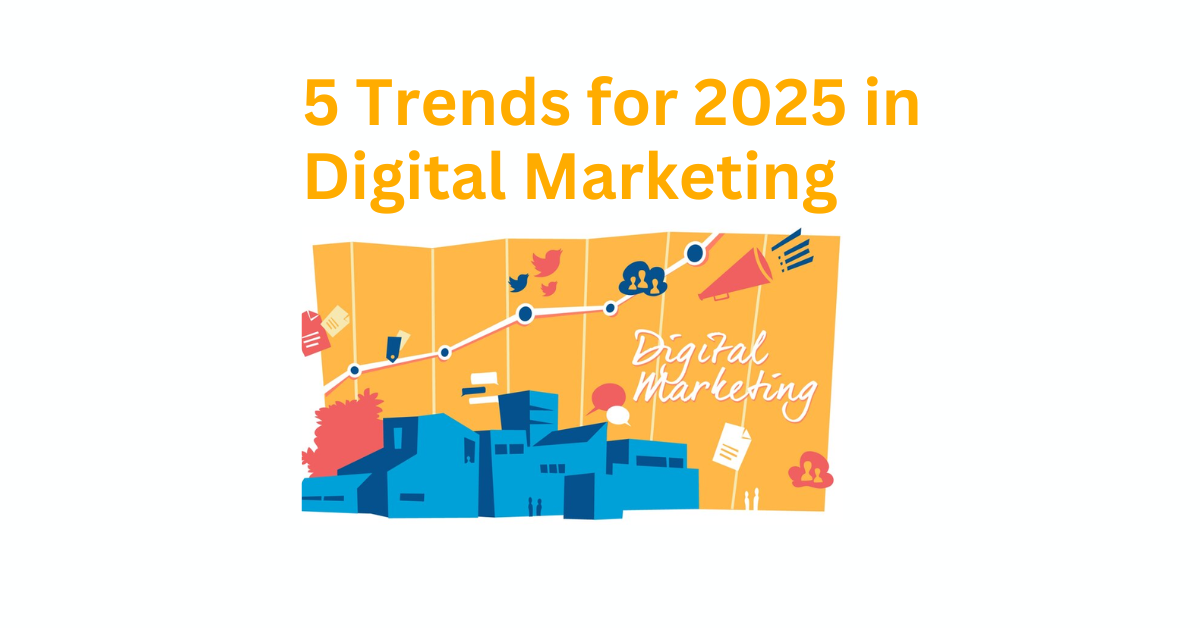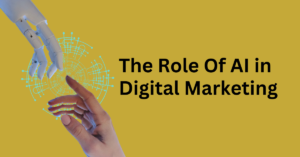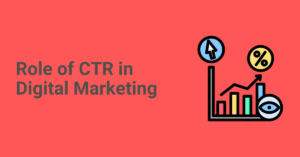As technology evolves, so do digital marketing strategies. The year 2025 will bring new trends, fueled by rapid advancements in artificial intelligence, data privacy concerns, and consumer demand for more personalized and meaningful experiences.
Here’s a look at the top five trends that will shape digital marketing in 2025.
1. Hyper-Personalization through AI and Data Analytics
– Why It’s Important: Customers are increasingly expecting personalized experiences tailored to their unique needs and preferences. Hyper-personalization uses AI and data analytics to deliver precisely this, making marketing more effective by delivering the right message to the right person at the right time.
– What’s Changing: In 2025, hyper-personalization will go beyond using customer names in emails. With advancements in AI, businesses will analyze complex data points like real-time behavioral data, purchase history, and even emotion analysis to create hyper-relevant content and offers. This level of personalization improves conversion rates and enhances the customer experience.
– How to Use It: Marketers can use AI-powered platforms to segment their audiences with unprecedented detail. From predictive analytics to AI-driven content recommendations, brands can serve highly tailored content across all digital touchpoints, leading to more successful and meaningful engagement.
2. Voice and Visual Search Optimization
– Why It’s Important: Consumers are increasingly relying on voice-activated devices and visual search tools for convenience and speed. By 2025, voice search will be a primary method for finding information online, while visual search—using images instead of keywords—will continue to rise in popularity.
– What’s Changing: Optimizing for voice and visual search requires a new approach to SEO. Voice search optimization involves using conversational keywords and focusing on answering common questions. Visual search, on the other hand, relies on high-quality images, metadata, and tagging that enable search engines to understand and categorize visual content accurately.
– How to Use It: Brands can optimize their content for voice by including more natural language and question-answer formats. For visual search, they can use well-structured metadata and high-resolution images that enhance discoverability. Retailers, for example, can capitalize on visual search by ensuring that products are easily identifiable through image searches, enhancing the path to purchase.
3. Privacy-First Marketing and First-Party Data Collection
– Why It’s Important: With growing concerns over data privacy, consumers are more cautious about sharing their personal information. The phasing out of third-party cookies by major browsers underscores the need for brands to adopt privacy-first practices and rely on first-party data.
– What’s Changing: In 2025, privacy-first marketing will involve collecting data directly from consumers with explicit consent. First-party data—such as email addresses, purchase history, and user preferences—will become the gold standard for personalizing marketing efforts without relying on third-party cookies. Additionally, companies will be expected to demonstrate transparency about how they collect and use data.
– How to Use It: To succeed with privacy-first marketing, brands must focus on building trust with their audience. This includes using transparent data collection practices, providing easy-to-understand privacy settings, and encouraging customers to share data by delivering real value in return, such as personalized offers or loyalty rewards.
4. Interactive and Immersive Experiences with AR/VR
– Why It’s Important: As augmented reality (AR) and virtual reality (VR) technologies become more accessible, they offer brands unique ways to engage with audiences and enhance the shopping experience. Immersive experiences allow consumers to “try before they buy,” making them especially valuable for e-commerce, retail, and real estate.
– What’s Changing: AR and VR are moving beyond novelty and becoming essential tools in digital marketing. In 2025, these technologies will allow consumers to interact with products in virtual showrooms, test out furniture in their own space, or even attend virtual events and fashion shows. This adds a new dimension to digital experiences, making them more engaging and memorable.
– How to Use It: Brands can use AR filters on social media platforms to let users virtually “try on” products, or create VR experiences that showcase products in a 3D environment. These experiences not only improve engagement but also reduce product return rates by giving customers a more accurate view of products before purchase.
5. Sustainability and Purpose-Driven Marketing
– Why It’s Important: Consumers, especially younger audiences, are increasingly aligning with brands that reflect their values. Sustainability, ethical business practices, and social responsibility are key factors influencing purchase decisions. In 2025, purpose-driven marketing will be essential for brands to remain relevant and trusted.
– What’s Changing: Companies will shift from simply promoting sustainability to embedding it within their core marketing strategies. From eco-friendly packaging to reducing carbon footprints, brands will highlight their commitment to positive change. Authenticity will be crucial—customers will expect brands to back up their claims with real action.
– How to Use It: To succeed with purpose-driven marketing, brands must integrate social and environmental initiatives into their business operations and communicate these efforts transparently. For instance, sharing stories about sustainable sourcing, green production practices, or partnerships with environmental organizations can foster loyalty and resonate with conscious consumers.
Conclusion
The digital marketing landscape of 2025 will be shaped by a blend of advanced technology, personalized experiences, and socially responsible practices. Brands that stay ahead of these trends will benefit from deeper customer connections, improved engagement, and a competitive edge. By embracing hyper-personalization, optimizing for voice and visual search, prioritizing data privacy, creating immersive experiences, and championing sustainability, marketers can prepare for a future where customer expectations continue to evolve.




